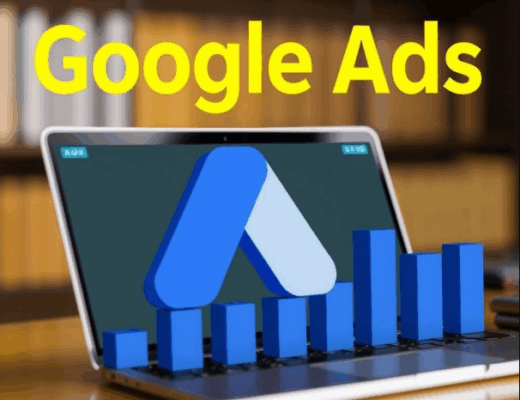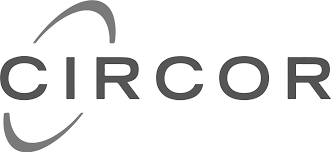Ever wonder how some local businesses seem to always be at the top of search results when you Google something in your city?
The answer often lies in Google Ads. But here’s the thing: it’s not just about throwing money at a campaign and hoping for the best. It’s about strategically targeting the right keywords that will get you the best ROI.
If you’re ready to unlock the full potential of Google Ads for your local business, you’re in the right place. This guide will walk you through how to target the top keywords in your city, without drowning in complexity or blowing your budget.
Set up Google Ads for Local Keywords

Why Google Ads Matter for Local Businesses
Before we dive into the technicalities, let’s take a moment to understand why Google Ads can be a game-changer for local businesses. With over 3.5 billion searches happening on Google daily, it’s safe to say that most customers turn to Google when looking for services. If your business isn’t showing up, you’re missing out.
Google Ads allows you to target customers precisely in your city. Unlike traditional advertising, Google Ads can pinpoint users based on location, time and search intent. This means your ads will only show to people who are actively searching for what you offer. It’s like having a spotlight shine directly on your business.
Step 1: Research Your Top Keywords
The first step to setting up a Google Ads campaign is identifying the keywords that your target audience is searching for. In simple terms, these are the words and phrases people are typing into Google when looking for services like yours.
Example: If you’re a plumber in New York, keywords might include “Plumber near me”, “Plumbing services in New York” or “Emergency plumbing 24/7”. It’s crucial to use Google Keyword Planner or other SEO tools to find keywords that not only have a high search volume but also match your services.
Use Location-Specific Keywords
Local businesses should always consider the inclusion of location in their keyword research. Search terms like “Best plumber in Austin” or “Affordable roofing in Dallas” are far more effective at driving local leads than general terms.
You can also use variations such as nearby neighborhoods, cities or even zip codes. Google rewards localized search efforts by ranking these ads higher in local results. So if you can craft a keyword strategy that focuses on your city’s specific neighborhoods, you’ll see more relevant traffic.
Step 2: Set Up Your Google Ads Campaign
Once you have your keywords ready, it’s time to set up your Google Ads campaign. Here’s a quick breakdown:
- Sign in to Google Ads: If you don’t already have an account, you’ll need to create one. It’s free and easy to set up.
- Create a New Campaign: Choose the campaign type. For most local businesses, Search Network is the best option since it shows ads when people are searching for keywords.
- Select Your Campaign Settings: Set the location to your city or even a radius around your business for hyper-targeted results. Don’t forget to choose a budget and bidding strategy that works for you.
- Choose Your Keywords: Add the keywords you researched earlier to your ad groups. Make sure they’re relevant to the service you’re providing.
- Create Your Ad: Write compelling ad copy. Make sure it includes your keywords and clearly states the value you’re offering, along with a strong call to action (CTA).
Tip for Effective Ads:
Your ad headline and description should speak directly to your target audience’s pain points. For example, instead of just saying “Plumbing Services,” you could say, “Plumbing Services in [Your City] – Fast, Reliable, Affordable.”
Step 3: Optimize Your Google Ads for Maximum ROI
Launching a Google Ads campaign is just the beginning. To truly maximize your return on investment (ROI), you’ll need to optimize it continuously. Here’s how:
1. Monitor Your Search Terms
Google Ads lets you see exactly which search terms triggered your ad. Regularly reviewing your search term reports is crucial because you’ll often find new keywords that you hadn’t considered before.
2. Refine Your Targeting
As your campaign progresses, you’ll get more insight into which locations, times and devices perform the best. Adjust your targeting settings to focus on these high-performing segments.
3. Test Your Ads
Constant testing is key to success. Try different variations of your ad copy and calls to action (CTAs). For example, you could test “Get a Free Estimate Today!” versus “Call Us Now for Immediate Service.” See what works best and double down on that approach.
Step 4: Track and Analyze Performance
Lastly, to make sure your Google Ads campaign is working, you need to track and analyze your performance. Key metrics like click-through rate (CTR), conversion rate and cost per acquisition (CPA) will give you a clear picture of your ROI.
Use Google Analytics to track which keywords are driving traffic to your website. This helps you adjust your strategy to prioritize keywords that bring in actual customers, not just clicks.
Key Metrics to Watch:
- Click-Through Rate (CTR): The percentage of people who clicked on your ad after seeing it. A higher CTR usually means your ad is highly relevant.
- Conversion Rate: The percentage of visitors who took a desired action (like filling out a form or making a call).
- Cost Per Conversion: How much you’re paying for each lead. The goal is to reduce this over time.
Conclusion: Take Action Now
Setting up Google Ads for top keywords in your city isn’t rocket science, but it does require a bit of strategy. Focus on localized keywords, monitor your campaign’s performance and optimize regularly for better results. If you do this right, you’ll soon see more leads, more calls and more customers.
Remember, success doesn’t happen overnight. Keep testing, keep optimizing and watch as your Google Ads campaign grows into a lead-generating machine!






























